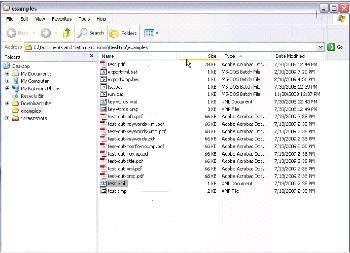

- #PDFINFO MAC DOWNLOAD PDF#
- #PDFINFO MAC DOWNLOAD INSTALL#
- #PDFINFO MAC DOWNLOAD DOWNLOAD#
- #PDFINFO MAC DOWNLOAD FREE#
I know its not pure PHP, but external programs are way better in PDF handling (as seen in the question). Of course this command line tool can be used in other languages that can parse output from an external program, but I use it in PHP. Surround with double quotes if file name has spaces $cmd = "C:\\path\\to\\pdfinfo.exe" // Windows

There is an easy way of extracting the pagecount from the output, here in PHP: // Make a function for convenience It is also really fast, even with big documents of 200+ MB the response time is a just a few seconds or less. I haven't seen a PDF document where it returned a false pagecount (yet). Producer: Acrobat Distiller 9.2.0 (Windows) An example of data returned by running it on a PDF document: Title: test1.pdf One of those files is pdfinfo (or pdfinfo.exe for Windows).
#PDFINFO MAC DOWNLOAD DOWNLOAD#
You download a compressed file containing several little PDF-related programs. It is downloadable for Linux and Windows. So, what does work reliable and accurate?Ī simple command line executable called: pdfinfo.
#PDFINFO MAC DOWNLOAD FREE#
It then returns an error:įPDF error: This document (test_1.pdf) probably uses a compression technique which is not supported by the free parser shipped with FPDI.
#PDFINFO MAC DOWNLOAD INSTALL#
Using FPDI (a PHP library)įPDI is easy to use and install (just extract files and call a PHP script), BUT many of the compression techniques are not supported by FPDI. That was with both the getNumberImages() and identifyImage() methods. Imagick requires a lot of installation, apache needs to restart, and when I finally had it working, it took amazingly long to process (2-3 minutes per document) and it always returned 1 page in every document (haven't seen a working copy of Imagick so far), so I threw it away. Here are some of the answers I found insufficient or simply NOT working: Using Imagick (a PHP extension) PDF documents come from many different clients, so they aren't generated with the same application and/or don't use the same compression method. Since I work for a graphic printing and reproduction company that works a lot with PDFs, the number of pages in a document must be precisely known before they are processed. Many hours have I searched for a fast and easy, but mostly accurate, way to get the number of pages in a PDF document. The solution is the accepted answer below. I love to help and solve another people problems.This question is for referencing and comparing.

Send me an issue for improvement or any buggy thing. 'clearAfter' => true, // auto clear output dir (if removeOutputDir=false then output dir will remain) 'removeOutputDir' => true, // remove output dir 'outputDir' => '/tmp/'.uniqid(), // output dir 'html' => [ // settings for processing html 'inlineCss' => true, // replaces css classes to inline css rules 'inlineImages' => true, // looks for images in html and replaces the src attribute to base64 hash 'onl圜ontent' => true, // takes from html body content only '/usr/bin/pdftohtml', // path to pdftohtml 'pdfinfo_path' => '/usr/bin/pdfinfo', // path to pdfinfo 'generate' => [ // settings for generating html 'singlePage' => false, // we want separate pages 'imageJpeg' => false, // we want png image 'ignoreImages' => false, // we need images 'zoom' => 1.5, // scale pdf 'noFrames' => false, // we want separate pages


 0 kommentar(er)
0 kommentar(er)
